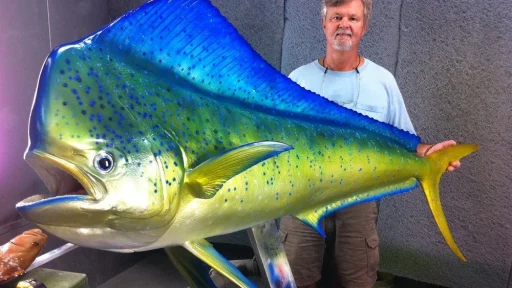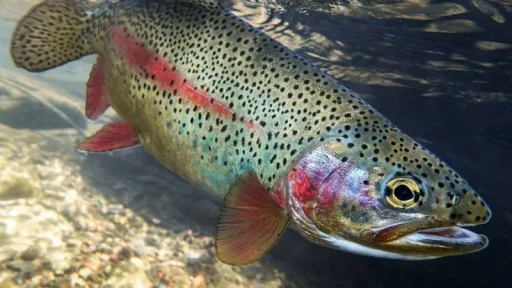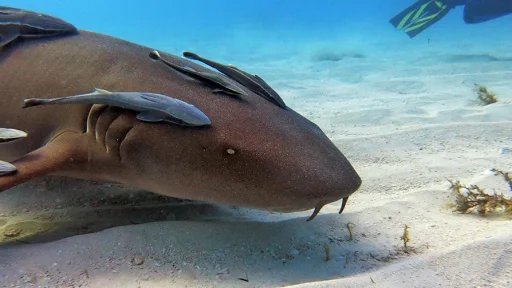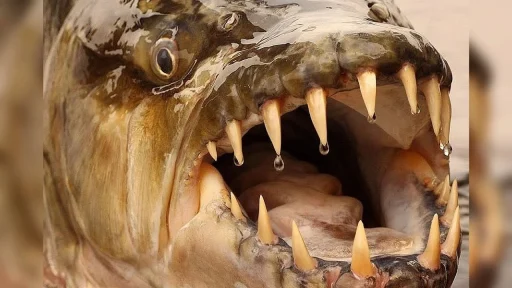Have you ever imagined coming face-to-face with a fish as big as a small car? Well, let me introduce you to the grouper fish, the gentle giant of coral reefs! These massive, charismatic fish aren’t just awe-inspiring to look at – they’re key players in marine ecosystems. In this deep dive, we’re going to explore the fascinating world of groupers and discover why they’re so vital for the health of our oceans.
Groupers belong to the family Serranidae, which includes sea basses. But don’t be fooled – these aren’t your typical bass! With over 160 species roaming the world’s oceans, groupers are like the global citizens of the fish world. You can find them in the warm, clear waters of the Caribbean and the vibrant reefs of the Indo-Pacific. These adaptable fish have made their homes in almost every tropical and subtropical sea, each species with its unique characteristics.
The Gentle Giants: Physical Marvels of the Sea
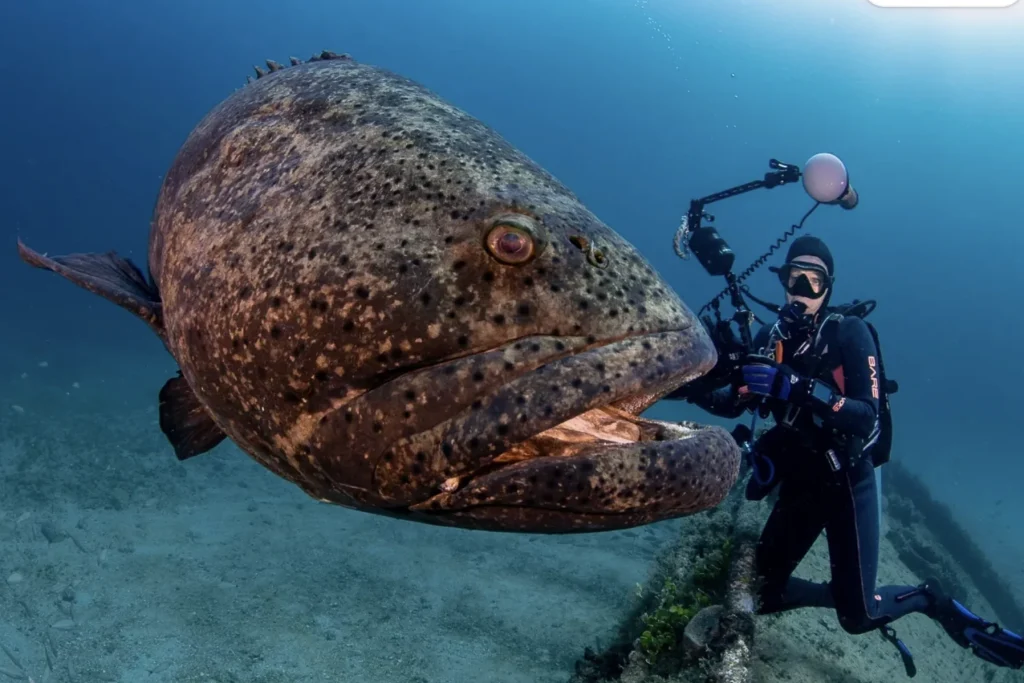
When you think of groupers, think big – really big. These fish can range in size from a few pounds to the weight of a small car. The goliath grouper fish, for example, can grow up to 8 feet long and weigh over 800 pounds! That’s heavier than some motorcycles. Their size isn’t the only thing that makes them stand out. Groupers come in a range of colors and patterns, from sleek stripes to bold polka dots. Some even sport camouflage patterns that make them blend into the reef like underwater ninjas.
One of the most notable features of groupers is their large, powerful mouths. They use these “bucket-like” jaws to create a strong suction, allowing them to gulp down prey in an instant. It’s like having a built-in vacuum cleaner, making them highly effective predators in their environment.
Life in the Slow Lane: Habitat and Behavior
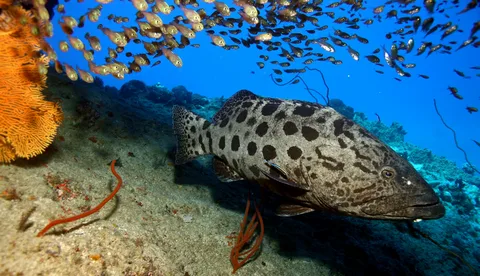
Grouper fish are like the couch potatoes of the ocean, preferring to hang out in rocky crevices, coral reefs, and even old shipwrecks. Some species live in deep waters, making homes on the ocean floor, while others thrive in the shallow, sunlit reefs. Despite their size, groupers are stealthy ambush predators. They lie in wait, motionless, until the perfect moment to lunge at their prey. It’s like watching a submarine-sized ninja sneak up on its target!
When it comes to their social lives, groupers have a wide range of behaviors. Some are solitary, only coming together for mating, while others form harems or participate in large spawning events. These social structures are essential for their reproduction and overall survival in the wild.
The Reef’s Cleanup Crew: Diet and Ecological Impact
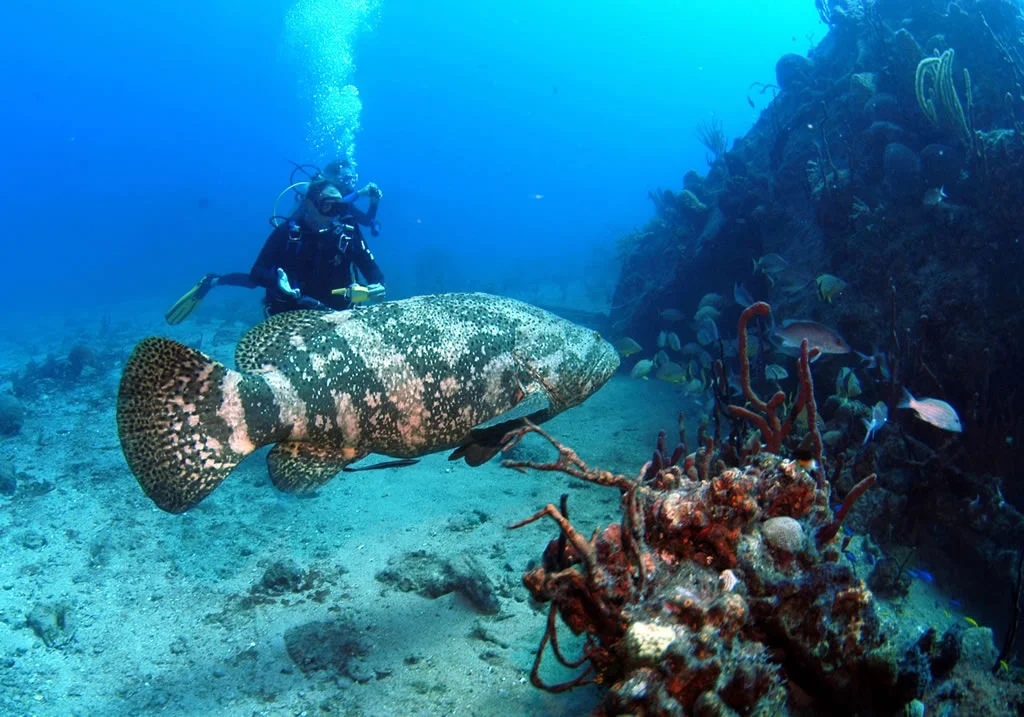
Grouper fish aren’t picky eaters. Their diet consists of a wide variety of marine creatures, including fish, octopuses, crustaceans, and even small sharks! As opportunistic feeders, they help maintain balance within the reef by keeping the populations of smaller fish and invertebrates in check.
Their method of hunting is just as impressive as their size. Using the powerful suction generated by their massive mouths, groupers swallow their prey whole. It’s not a glamorous way to eat, but it’s certainly effective. This predatory role is critical for maintaining the delicate balance of marine ecosystems.
The Circle of Reef Life: Reproduction and Growth
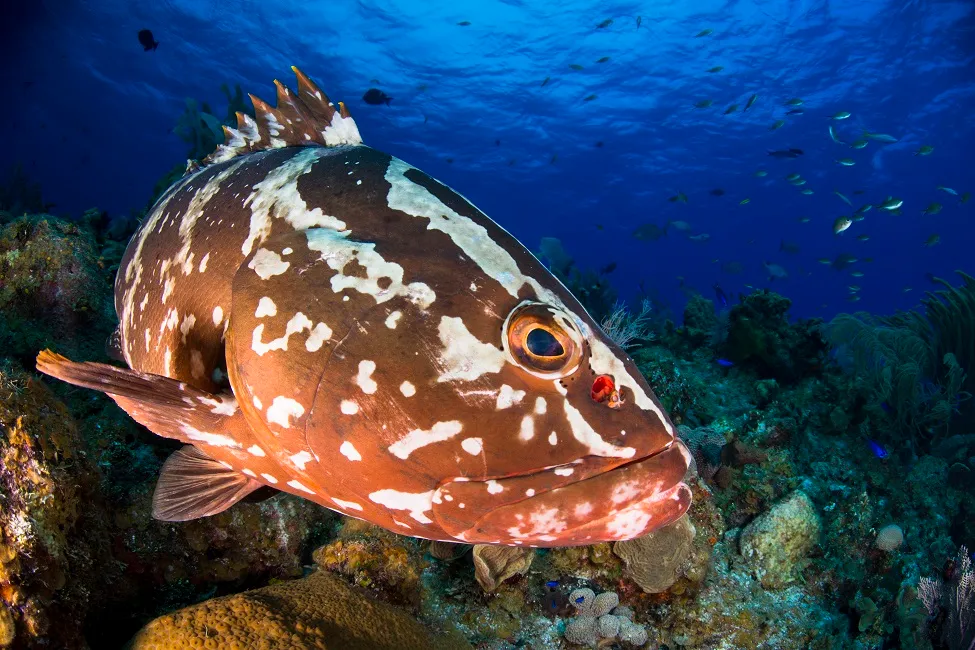
Grouper fish reproduction is as fascinating as their hunting habits. Many species are protogynous hermaphrodites, which means they start life as females and can change to males as they grow older. This ability to switch sexes helps ensure there are always enough males and females during mating periods, improving their chances of successful reproduction.
Groupers often gather in massive spawning aggregations, where thousands of individuals come together to mate. These events are essential for population growth and genetic diversity. After hatching, the larvae drift as plankton before settling into their reef habitats, eventually growing into the enormous adults we know. This life cycle is vital for maintaining healthy grouper populations across the ocean.
Guardians of the Reef: Ecological Importance
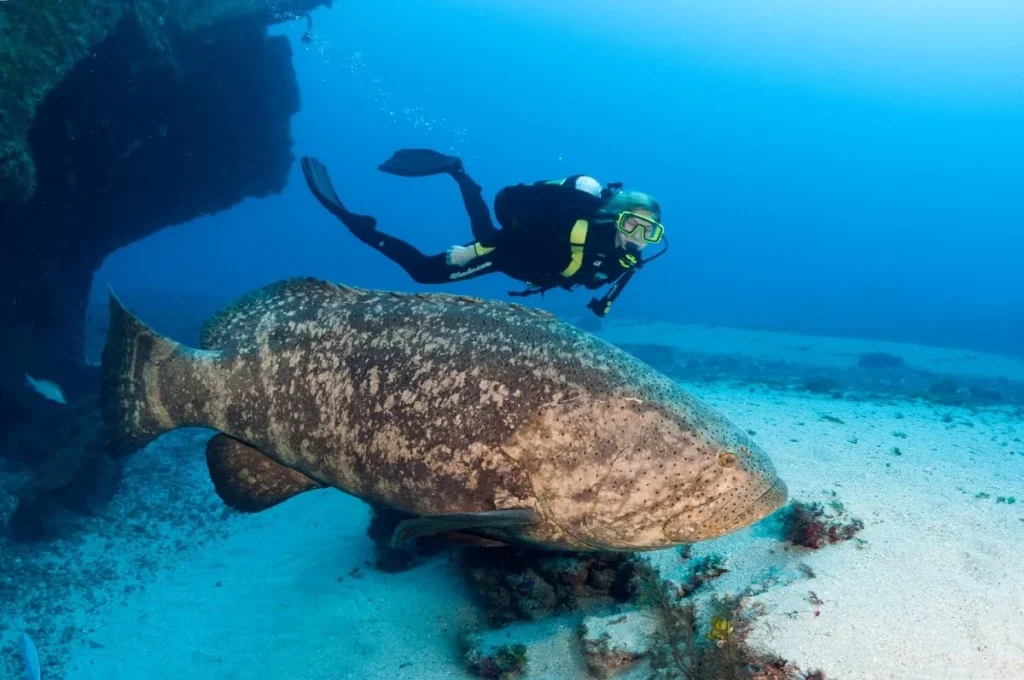
As top predators, groupers play a crucial role in maintaining the balance of reef ecosystems. By preying on smaller fish and invertebrates, they prevent any single species from overpopulating and upsetting the reef’s delicate harmony. The health of grouper fish populations often reflects the overall condition of marine environments, making them valuable indicator species for marine biologists and conservationists.
In addition to their role as predators, some large groupers can even alter the physical structure of their habitats. By feeding on certain species, they influence the distribution of prey populations and can impact the physical environment of the reef. This makes them not only predators but also ecosystem engineers in their own right.
Troubled Waters: Threats and Conservation Efforts
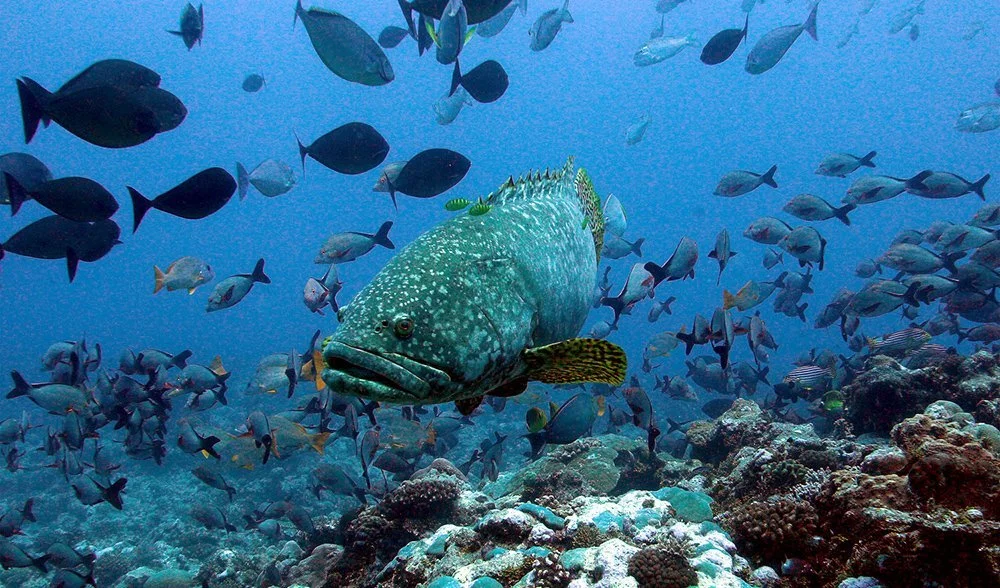
Despite their importance, grouper fish populations are under significant threat. Overfishing is the most serious issue. Due to their large size, slow growth, and delayed reproduction, groupers are particularly vulnerable. Fishermen prize them for their tasty flesh, and many species are being caught faster than they can reproduce.
Habitat destruction, especially the loss of coral reefs, also threatens groupers. Without healthy reefs, these fish lose their homes and hunting grounds. Climate change further complicates matters, as rising sea temperatures and ocean acidification put additional pressure on both grouper fish populations and their coral habitats.
Fortunately, conservation efforts are underway. Marine protected areas (MPAs) provide safe zones where groupers can thrive without the threat of fishing. Many countries have implemented stricter fishing regulations, such as size limits and seasonal closures, to allow populations to recover. Additionally, some organizations are developing captive breeding programs to help bolster wild populations.
Conclusion: Giants with a Giant Role to Play
As we’ve explored, groupers are not just impressive due to their size – they play a critical role in maintaining the balance of marine ecosystems. As predators and ecosystem engineers, they help ensure the health and resilience of coral reefs. However, they face numerous threats from overfishing, habitat loss, and climate change.
By continuing conservation efforts, we can help protect these magnificent giants of the sea. The future of groupers is closely tied to the overall health of our oceans, and by safeguarding them, we are also preserving the biodiversity and vitality of marine ecosystems worldwide.
So, the next time you encounter a grouper fish, whether on a dive or in a marine sanctuary, remember their crucial ecological role. These underwater giants are helping to keep our oceans thriving.
Read Also: TriggerFish: The Ocean’s Living Locks and How They Got Their Name
FAQs: Diving Deeper into Grouper Fish Trivia
Q: Can groupers be dangerous to humans?
A: Groupers are generally not dangerous to humans. However, very large species like the goliath grouper fish can become aggressive if provoked or feel threatened. It’s always best to observe them from a respectful distance.
Q: How long do groupers typically live?
A: Grouper fish lifespans vary by species, but many can live for several decades. Some larger species, like the goliath grouper, may live up to 50 years or more in the wild.
Q: Are groupers good for eating?
A: Yes, many grouper fish species are highly sought after for their firm, mild-tasting flesh. However, due to overfishing concerns, it’s essential to choose sustainably sourced grouper if you’re eating it.
Q: Can groupers change their sex?
A: Yes, many groupers are protogynous hermaphrodites, meaning they begin life as females and can later change to males. This trait helps balance populations and increase reproductive success.
Q: How do groupers communicate with each other?
A: Groupers communicate using a variety of methods, including body language and sounds. Some species make booming noises by vibrating their swim bladders, especially during spawning or territorial disputes.


